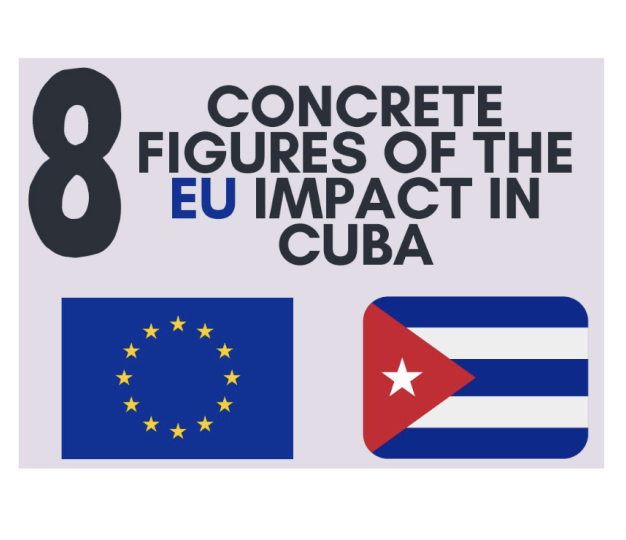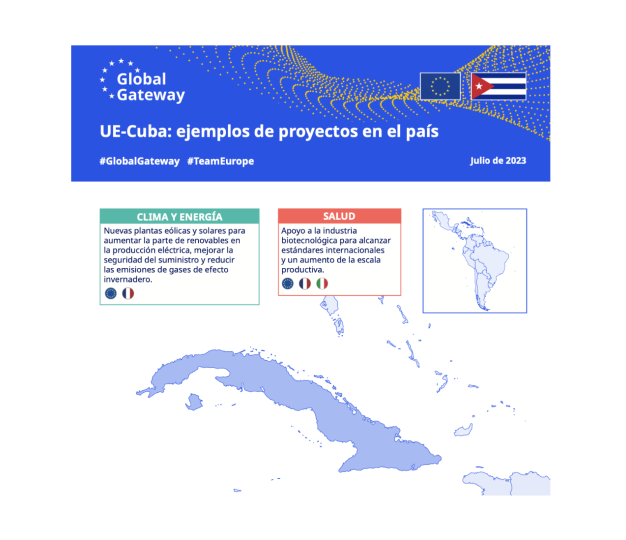PROJECTS
EU Projects with Cuba
The European Union in Cuba supports cooperation projects with the aim of contributing to the sustainable development of the country and the well-being of its citizens, as well as exploring areas for joint action to address global challenges. In addition to the development cooperation programmes themselves, there are various opportunities for exchange and cooperation in the fields of education, research and innovation.
On This Page
EU Cooperation in Cuba
The orientation of EU cooperation in Cuba is based, in accordance with the principles of ownership and effectiveness of development cooperation, on continuous dialogue and analysis shared with the Member States and the institutional and social counterparts in the country.
About 80 projects worth EUR 155 million are currently ongoing, prioritising the sectors of sustainable agriculture and food security, renewable energy and climate change, and modernisation of the economy.
The 2021-2027 programme will focus on supporting sustainable municipalities and boosting the national economy, with an emphasis on MIPYMEs and the sectors of agriculture, energy, communication technologies, creative cultures and biotechnology, including cooperation on development and access to vaccines against COVID-19.
In addition to bilateral, regional and thematic programmes, Cuba benefits from its participation in higher education (Erasmus +) and research (Horizon Europe) programmes.
EU impact in Cuba
The EU has facilitated the exchanges of experts and civil servants in key policy areas, benefiting over 20 000 Cuban civil servants.
1) Over 200 HA of mangroves rehabilitated
Early warning systemstrengthened with 4 centresequipped.
Additional hydro-meteorologicaland sea level monitoring stationsin the northern coast of thecountry. 39 family gardens supported.
2) More then 500 000 people benefit from a better diet
The EU has supportedmunicipal food self-sufficiency and increased local production of healthy food.
3) Over 7.5 million COVID antigentests, and the capacity to produce over 2.5 million facemasks FFP2 per year.
4) 54 600 patiets benefited from the local manufacturing of ventilators
8 000 more from intensive health care monitoring devices.
5) 911 582 people have access to water and sanitation
Including in the2017 hurricane Irma-affected areas.
6) Energy audits in 200key institutions identifying 1 238 opportunities for energy efficiency improvements
With a potential of savings of 83.8 GWh per year and reduction of 71 144.9 tons of CO2 emissions.
7) 7 000 people in remote rural areas benefited from the installation of 827 isolated photovoltaic panels
Installation systems of 2 kilowatts in 4 provinces of Cuba. Reparation of 2 000 isolated photovoltaic systems in13 provinces of Cuba.
8) Approximately 15 000 rural families have access to adapted equipment in agriculture, livestock breeding and agro-forestry
About 45 000 people including 105 cooperatives representing about 11 500 rural households, 15 service providers and two agro-industrial entities
Global Gateway UE-Cuba
Ejemplos de proyectos en el país
Estas propuestas no reflflejan la totalidad de los compromisos de Equipo Europa en el país. Realzan algunas inversiones concretas en infraestructuras dentro del marco Global Gateway.
Se verán acompañadas por medidas suaves en un enfoque de 360º, en aras de mejorar las políticas públicas y los entornos regulatorios y de negocio, desarrollar capacidades, impulsar la innovación y transferir tecnología.
Global Gateway Regional Caribe
Proyectos de Transporte Clima y Energía
Fuente: Comisión Europea – Eurostat/GISCO



